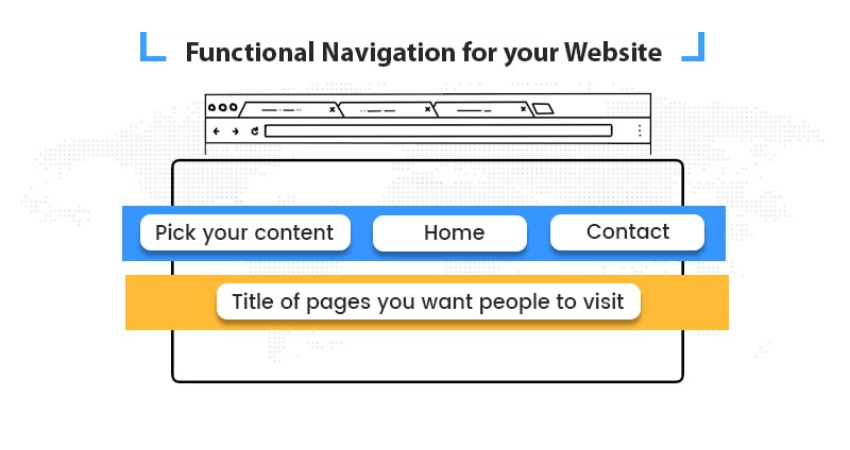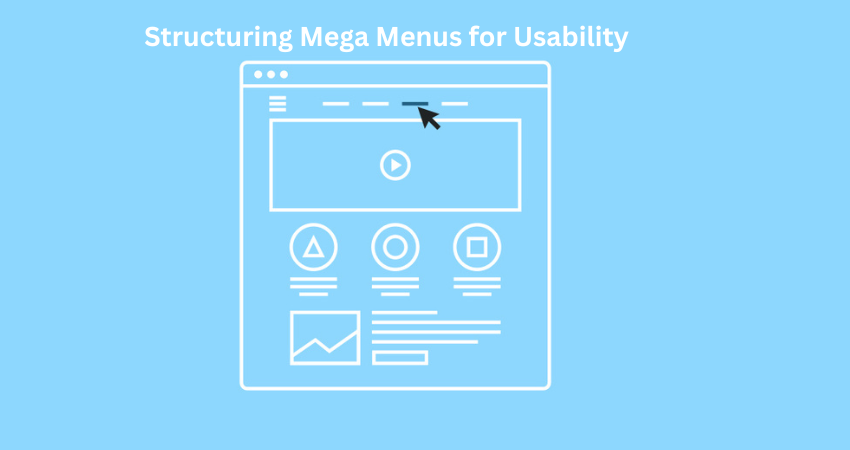Even though it may not be the flashiest thing on a website, navigation is probably one of the critical parts of its design; it resembles a map to find things quickly and easily. Among the most extreme navigation forms, the one at the center of attention is horizontal navigation menus. In this article, let’s discuss what so superb about this technique, how it compares with other techniques, and how you can leverage this for better user experience on your site.
Horizontal Navigation The Industry Standard
Horizontal navigation menus are links typically seen stretched across the top of a website, have fast become the best way to guide users. Their simplicity and familiarity make them the users’ favorite, and they have been around since the Internet’s early days. When done well, these navigation menus provide the best experiences for users, encouraging them to linger and explore.
Why Horizontal Menus Work So Well
Most humans are habitual beings and expect certain features to be placed within some particular comfort zones on websites. This is usually the case with having a horizontal menu at the top of any page, as it is expected. It usually comes right after the logo and the hero section, and is actually the first thing the user gets to notice. Moreover, it is quite unobtrusive, providing structure while not overwhelming the design.
It just fits whether you’re building a website for your portfolio, an online store, or a corporate homepage. It also helps that it is mobile-compatible. For horizontal menus, with hamburger transformation, you will see that they adapt well to mobile screens. Embracing this characteristic keeps smooth experiences across devices, which is essential, given that mobile browsing often exceeds that of desktop computers.
“Because it is the reason behind the large usage of horizontal menus: Responsiveness. Being changed into hamburger menus, horizontal menus adapt to mobile screens phenomenally. For today’s needs concerning usage of mobile devices surpassing those of desktop, this would deliver the smoothness required.”
Comparing Other Navigation Techniques
Horizontal navigation is fairly common, but by no means the only solution available. Some sites utilize vertical sidebars, mega menus, or sticky navigation in an effort to cater to their own content needs. Each technique has its own advantages and ideal application.
Vertical vs. Horizontal Which Is Better?

Horizontal navigation menus are usually present in any traditional sites since they actually work with user expectations. Vertical navigation can be a great choice on niche websites or internal platforms, while aversion to them becomes common for external users-and rightly so if they are not well designed for every user experience-they just tend to feel “off.” Often used in dashboards, portfolios, and web applications where horizontal space at the top is limited, vertical navigation offers ample space for longer labels and submenus that usually cannot fit in a drop-down horizontal menu.
Mobile Navigation and Hamburger Menus
As mobile traffic has increased, designing navigation would have to be smaller in screen size. This is the purpose of the hamburger menu, with its three bars in the corner. Usually, it is the mobile counterpart of horizontal navigation but hidden so that it can save space.
When to Use a Hamburger Menu
The hamburger menu is the most fitting design for the mobile platform because it guarantees minimalist layouts and important links. However, misuse is hardly justifiable. Hiding all navigation on the smaller screen under one hamburger can be an extra step for users in the way of reaching content. Therefore, an important CTA—”Get a Quote,” “Shop Now,” etc.—should be displayed outside the hamburger for priority while secondary links can stay hidden.
There’s also a best practice that says to animate the transition smoothly for an easy-to-close menu. If your users find it hard to reach your navigation or exit it, they might bounce. Make it feel like the natural touch experience it is meant to be; really, touch it with thumbs.
Mega Menus for Large Websites
When a website has a ton of categories, such as an ecommerce store or online magazine, a standard horizontal menu can fall short. This is where mega menus come in. A mega menu opens its shutters and displays a plethora of categories and subcategories at once. It gives the user an overview of all choices that could be made.
Structuring Mega Menus for Usability

Visually arrangement is the key for mega menus with headings, icons, or even images that provide guidance for the users. For instance, a clothing store can separate sections by gender and then list product categories like shirts, pants, and accessories under each. Ease of scanning is paramount. Keep in mind that too many options can overwhelm visitors; rather, group related items together and take advantage of whitespace.
Accessibility, too, is important. The menu should be keyboard-navigable, and capable of being read by screen readers. Mega menus thus help users to easily find their required products without digging through several pages for it and thus enhance the user experience and conversion.
Sticky Navigation for Constant Access
Sticky navigation – menus stay on top of the screen as users scroll – are best to keep important links always within the reach of these users. This is really helpful for very long pages that might have users wanting quick access to different sections without having to scroll the whole way back to the top.
The Balance between Visibility and Distraction
Sticky navigation is supposed to be subtle; it really shouldn’t get in the user’s way. Stickler number two: it must stay compact and minimize the number of links it shows. Combine sticky navigation with subtle animated effects, such as shrinking the header or changing the background color, to keep the attention focused without becoming annoying.
Best examples come from ecommerce or service websites that employ a persistent “Contact” or “Add to Cart” button, thus helping to improve conversion rates. Users really appreciate that functionality being right there.
Conclusion
After all these years, horizontal navigation still is going strong because it works absolutely fine. It’s intuitive, familiar and makes sense across a variety of devices. True, one could name other forms of navigation – vertical menus, mega menus, and sticky headers – their place in the hierarchy. However, the horizontal menu remains the most common, and rightly so.
If you are designing or redesigning your site, make sure you have horizontal navigation as a base. Customize it; test it with different devices; make changes according to how people use it. Navigation isn’t a design choice-it’s a user experience decision with an immediate impact on how visitors feel about your site.